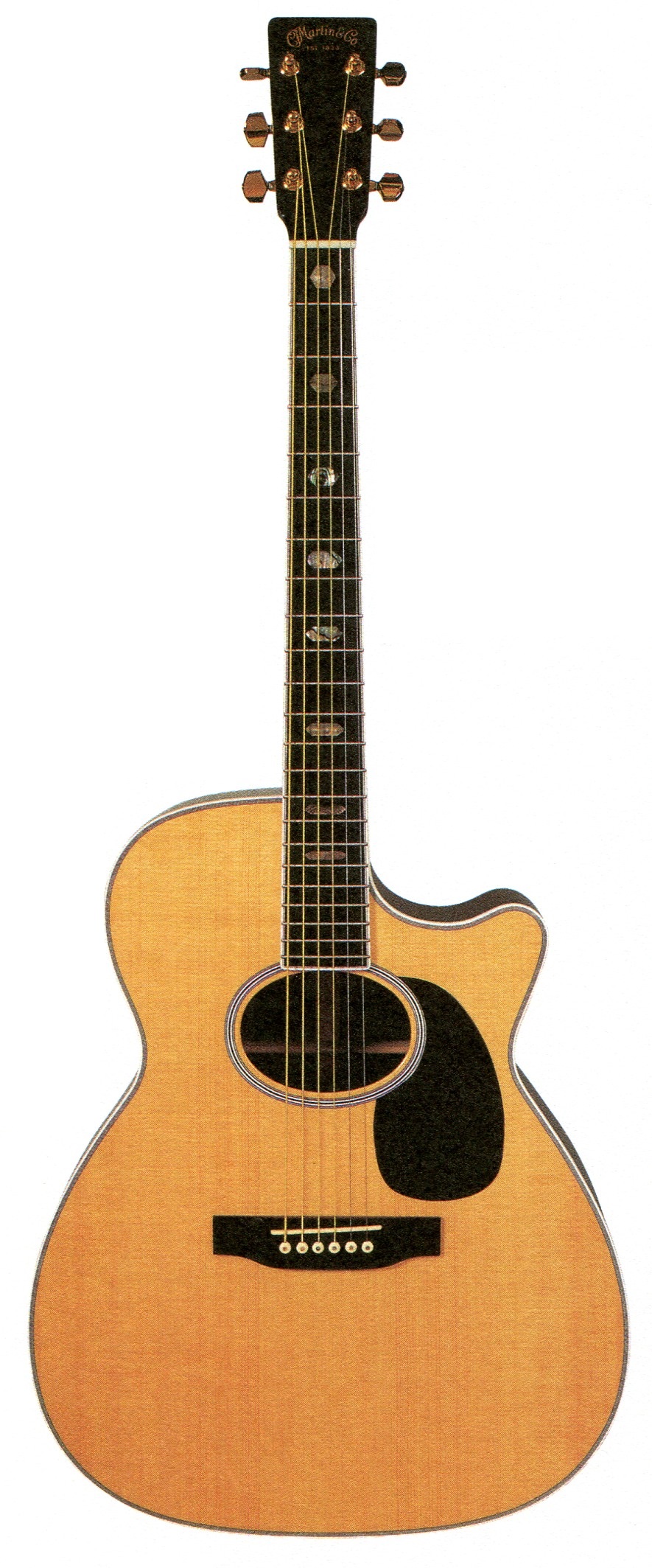Martin JC-40

The cutaway, the oval soundhole, and the large body of Martin’s JC-40 signaled a subtle expansion from tradition under the leadership of C.F. (Chris) Martin IV, great-great-great-great grandson of the founder.
Although Martin’s legendary dreadnaughts had long been the largest guitars in the line, the 1930s archtop line had featured a larger body shape, with the thin-waist of the 000 rather than the thick waist of the dreadnaughts.
In the 1960s, some luthiers had sucessfully converted old archtops to flat-tops, and Martin appropriated the concept for it’s M-series in 1977. Cutaway M-series models were added in 1981. Although Size M, at 16 inches wide, was 3/8-inch wider than a dreadnaught, it had the same depth as the smaller 000 size.
Chris Martin, then working in sales, thought a deeper body would compete better with Gibson’s J-200, and the result was the J-40. Introduced in 1985, a year before C.F. Martin III died and Chris became CEO, the J-40 was an immediate success, and the model quickly grew into an entire series of Martin J models.
